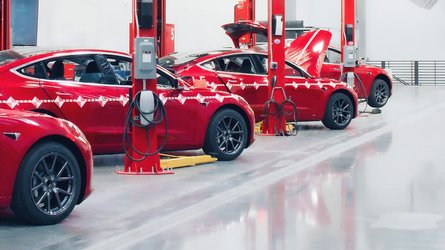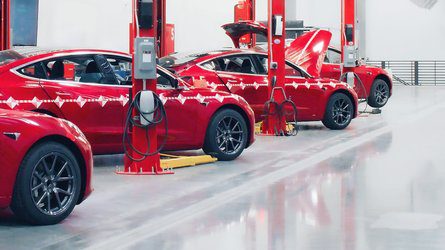Tesla recently released its fourth quarter Vehicle Safety Report for 2022, which includes data on the number of miles driven per one accident registered when using Autopilot technology, not using Autopilot technology, and the US average (NHTSA and FHWA data). The report provides insight into how Autopilot improves vehicle safety, but it has some limitations due to the methodology.
For example, Tesla counts all accidents, regardless of the cause, despite the fact that more than 35 percent of all Autopilot crashes occur when the Tesla vehicle is rear-ended by another vehicle. According to Tesla, the number of miles driven per one accident registered, when using Autopilot technology, amounted to 4.85 million miles driven – an 11.5 percent increase year-over-year. This result was lower than in the previous three quarters, but it is important to note that there are fewer crashes registered every year.
Without using Autopilot technology, Tesla vehicles statistically note more accidents. In Q4 2022, it was one accident per 1.40 million miles driven (8 percent more than a year ago). There is a significant difference between the two modes of driving (with or without Autopilot) and the difference continues to increase. However, it is important to note that the two data sets should not be compared against each other, as the input data might be widely different (like simple highway driving or complex city driving).
The US average for automobile crashes is 0.652 million miles (there has been no update in a long time). Tesla has provided a chart with all numbers provided by the manufacturer plus NHTSA and FHWA data about the average distance between an automobile crash in the United States. The difference is pretty huge, but once again, we shouldn’t really compare the numbers directly. The US average includes also a much older vehicle fleet (with fewer safety systems), which alone is a big factor.
Tesla’s report does not allow us to evaluate the difference between Autopilot and non-Autopilot driving. We assume that the proper use of Autopilot improves safety, but we can only see whether the active safety systems are improving over time (and it’s also only a rough comparison). It’s important to note that results are comparable only within a particular category (Autopilot or without Autopilot), not between the categories.
Tesla has also provided information about its methodology of registering accidents: “We collect the amount of miles traveled by each vehicle with Autopilot active or in manual driving, based on available data we receive from the fleet, and do so without identifying specific vehicles to protect privacy. We also receive a crash alert anytime a crash is reported to us from the fleet, which may include data about whether Autopilot was active at the time of impact. To ensure our statistics are conservative, we count any crash in which Autopilot was deactivated within 5 seconds before impact, and we count all crashes in which the incident alert indicated an airbag or other active restraint deployed.”
In conclusion, Tesla’s Vehicle Safety Report provides us with some idea of how Autopilot improves vehicle safety over time. However, due to various factors such as seasonality and different driving scenarios, we cannot compare Autopilot to non-Autopilot driving directly. We can only see whether the active safety systems are improving over time (and it’s also only a rough comparison).
FAQ
Q1: Are electric car batteries recyclable?
A1: Yes, electric car batteries are recyclable.
Q2: Are electric car chargers free?
A2: It depends on the charger and the location. Some electric car chargers are free, while others may require a fee.
Q3: Can electric car batteries be rebuilt?
A3: Yes, electric car batteries can be rebuilt with the right tools and knowledge.










